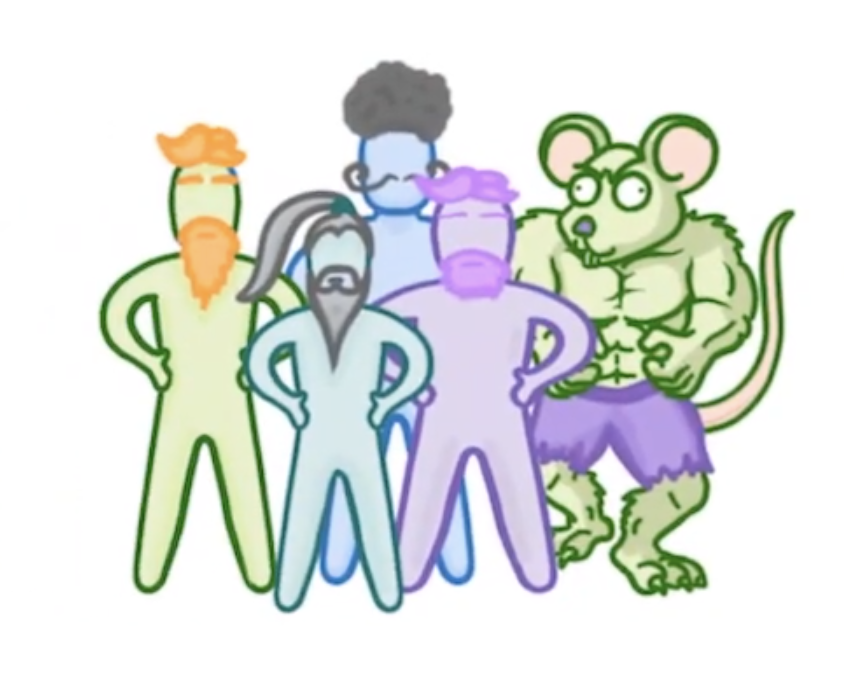Variation & Evolution
This lesson covers:
- What 'variation' is
- How both genes and the environment can contribute to variation
- The difference between 'continuous variation' and 'discontinuous variation'
- What 'survival of the fittest', 'natural selection', and 'evolution' mean
- Who Charles Darwin was
- How evolution works
What does the term 'phenotype' mean?
The observable characteristics of an organism
The combination of alleles that an organism has
One of the different forms of a gene
|

Differences in the characteristics of individuals within a population is called .
|
Which two factors contribute to the variation between organisms?
|
A change in the DNA code is called a .
|
What factor(s) are involved in determining body mass?
Genetic factors only
Both genetic factors and environmental factors
Environmental factors only
|
Which of the following are determined entirely by genetic factors?
(Select all that apply)
Natural eye colour
Biological sex (male or female)
Skin colour
Height
|
Continuous and discontinuous variation
- Characteristics within a species can either show either 'continuous variation', or 'discontinuous variation'
- Continuous variation is where the characteristic changes gradually over a range of values, such as height, body mass, and skin colour. These characteristics are usefully influences by multiple genes (polygenic).
- Discontinuous (discrete) variation is where the characteristic has distinct forms, with no overlap. For example, eye colour is discontinuous because you have either blue, green, or brown eyes. These characteristics are usually only influenced by one or two genes.
Which of the following characteristics show continuous variation?
(Select all that apply)
Eye colour
Blood group (A, B, or AB)
Strength
Hair colour
|
A change in the genetical material of an organism is called a .
|
Which statement about mutations is true?
They are always harmful
They are always advantageous
They never have any affect on the organism
They generally have no effect, but are occasionally harmful, and very occasionally advantageous
|
What does the phrase 'survival of the fittest' mean?
Over long periods of time, one population of organisms may become a new species
Certain individuals are selected by humans to reproduce
The individuals with the most favourable characteristics are most likely to survive
|
___________ is the process by which the inherited characteristics of a population change over time due to natural selection. In some cases this may result in the formation of a new species.
|
Who is credited with developing and proposing the theory of evolution?
Charles Darwin
Charles Babbage
Jean-Baptiste Lamarck
|
Which of the following provide evidence for the theory of evolution?
(Select all that apply)
Fossil records
The spread of antibiotic resistance
The fact that the human body is so complex
The fact that variation is due to genes and the environment
|
Describe a series of events that might result in zebras evolving to run more quickly.
|
Speciation is the evolutionary process by which populations evolve to become distinct .
|